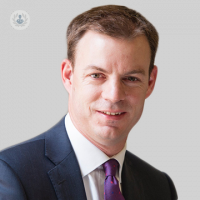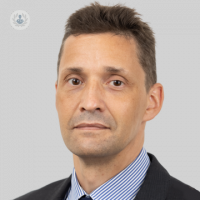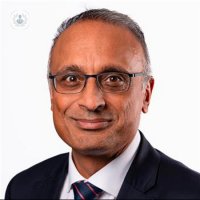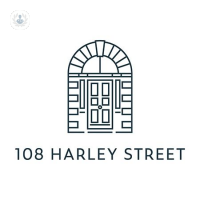What are the menisci (meniscus)?
The menisci are two fibrocartilage structures located inside the knee. They improve joint function, acting like shock-absorbing cushions that help disperse the weight of the body and absorb forces exerted on the knee. They give the knee stability and play a key role in the proper functioning of the joint. The knee joints are among the most vulnerable joints of the body and can suffer serious injuries. They need to be able to withstand great pressure and to absorb and dissipate forces, which makes their role fundamental.
Orthopaedic surgeons treat problems relating to the knee and the menisci.
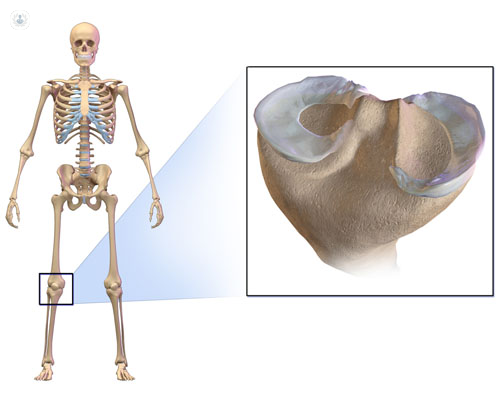
Function of the menisci:
The menisci have various functions:
- To absorb the shock waves generated when you walk or run. The menisci can absorb almost 20% of these shock waves.
- Force transmission: the fibres that make up the meniscus enable the transmission of compressive force by up to 50% when the knee is extended, and by up to 90% when the knee is bent.
- Joint stability: if the knee buckles, this may be due to laxity or tearing of the anterior cruciate ligament. Knee stability is influenced by the meniscus, the quadriceps and hamstring muscles.
- Proprioception: the menisci help to increase proprioception.
- Joint slippage: they contribute to the lubrication of the joint due to their shape and high water content.
Pathologies of the menisci:
Certain movements of the knee can cause injuries to the menisci, when they do not follow the movements of the femoral condyles over the tibial plateau. This happens if, for example, the knee is suddenly extended, which is very common in football players. In this case, there is no time for the meniscus to move forward, so it is trapped between the femoral condyle and the tibial plateau.
Another type of injury is distortion of the knee joint, with external rotation and lateralisation, causing the meniscus to slide under the convexity of the internal condyle, resulting in a longitudinal tear of the meniscus. Moreover, a torn internal ligament can also lead to a torn meniscus.
Meniscus tears are one of the most common injuries. Although common in athletes, anyone can suffer this injury. There can be different types of tears, but the most common tears are longitudinal, parrot beak, flap, bucket handle and mixed/complex. In the case of sports injuries, these are usually accompanied by ligament injuries.
Treatments for meniscus pathologies:
Conservative treatment is recommended for this type of injury, which is sometimes sufficient for meniscus tears, giving the knee time to heal itself. This process is known as RICE, which stands for rest, ice, compression and elevation. It may be supplemented with anti-inflammatory medication to reduce pain and inflammation.
However, surgery may sometimes be necessary if symptoms do not abate. In this case, the orthopaedic surgeon will usually recommend knee arthroscopy. During arthroscopy, a mini camera is inserted into the knee through a small incision, allowing visualisation of the inside of the joint. The specialist will make two or three other small incisions to access the knee and repair the injury. After surgery, the specialist will immobilise the knee. When the wounds have healed somewhat, you should start rehabilitation exercises to restore joint mobility and strength.
11-13-2012 09-19-2023
Meniscus
Mr David Houlihan-Burne - Orthopaedic surgery
Created on: 11-13-2012
Updated on: 09-19-2023
Edited by: Kate Forristal
What are the menisci (meniscus)?
The menisci are two fibrocartilage structures located inside the knee. They improve joint function, acting like shock-absorbing cushions that help disperse the weight of the body and absorb forces exerted on the knee. They give the knee stability and play a key role in the proper functioning of the joint. The knee joints are among the most vulnerable joints of the body and can suffer serious injuries. They need to be able to withstand great pressure and to absorb and dissipate forces, which makes their role fundamental.
Orthopaedic surgeons treat problems relating to the knee and the menisci.

Function of the menisci:
The menisci have various functions:
- To absorb the shock waves generated when you walk or run. The menisci can absorb almost 20% of these shock waves.
- Force transmission: the fibres that make up the meniscus enable the transmission of compressive force by up to 50% when the knee is extended, and by up to 90% when the knee is bent.
- Joint stability: if the knee buckles, this may be due to laxity or tearing of the anterior cruciate ligament. Knee stability is influenced by the meniscus, the quadriceps and hamstring muscles.
- Proprioception: the menisci help to increase proprioception.
- Joint slippage: they contribute to the lubrication of the joint due to their shape and high water content.
Pathologies of the menisci:
Certain movements of the knee can cause injuries to the menisci, when they do not follow the movements of the femoral condyles over the tibial plateau. This happens if, for example, the knee is suddenly extended, which is very common in football players. In this case, there is no time for the meniscus to move forward, so it is trapped between the femoral condyle and the tibial plateau.
Another type of injury is distortion of the knee joint, with external rotation and lateralisation, causing the meniscus to slide under the convexity of the internal condyle, resulting in a longitudinal tear of the meniscus. Moreover, a torn internal ligament can also lead to a torn meniscus.
Meniscus tears are one of the most common injuries. Although common in athletes, anyone can suffer this injury. There can be different types of tears, but the most common tears are longitudinal, parrot beak, flap, bucket handle and mixed/complex. In the case of sports injuries, these are usually accompanied by ligament injuries.
Treatments for meniscus pathologies:
Conservative treatment is recommended for this type of injury, which is sometimes sufficient for meniscus tears, giving the knee time to heal itself. This process is known as RICE, which stands for rest, ice, compression and elevation. It may be supplemented with anti-inflammatory medication to reduce pain and inflammation.
However, surgery may sometimes be necessary if symptoms do not abate. In this case, the orthopaedic surgeon will usually recommend knee arthroscopy. During arthroscopy, a mini camera is inserted into the knee through a small incision, allowing visualisation of the inside of the joint. The specialist will make two or three other small incisions to access the knee and repair the injury. After surgery, the specialist will immobilise the knee. When the wounds have healed somewhat, you should start rehabilitation exercises to restore joint mobility and strength.
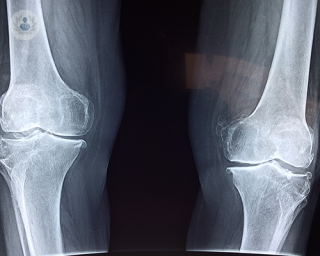

Painful knee clicking: causes and solutions explained
By Mr Graeme Nicholas Fernandez
2025-01-20
Why does your knee click? When should you see a doctor or specialist about painful clicking? Mr Graeme Nicholas Fernandez, one of the Uk's most experienced orthopaedic surgeons, answers these common questions and more to provide you with a solid understanding of painful knee clicking and the solutions available for each potential cause. He also clarifies how you can still receive help in the times of the COVID-19 pandemic. See more
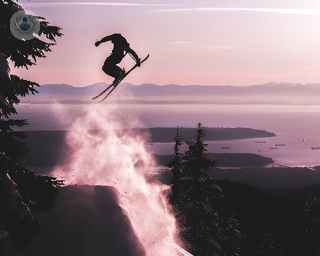

Skiing and knee injuries
By Mr Paul Trikha
2025-01-20
Skiing and snowboarding are inherently risky sports. Injuries are fairly common, and of these, around a third involve the knee. Skilled orthopaedic surgeon Mr Paul Trikha explains. See more


How serious is a torn meniscus? And how is it treated?
By Mr David Houlihan-Burne
2025-01-20
Mr David Houlihan-Burne explains what a torn meniscus is, how it can occur and how it can be treated. See more


Recovery time after meniscus repair: when can I get back to work?
By Professor Paul Lee
2025-01-20
If you are planning to get the meniscus tear in your knee repaired you might be worried about the recovery period afterwards. We interviewed leading consultant orthopaedic surgeon Professor Paul Lee about how long it takes to get back to work or sport, what symptoms are normal in the recovery period, and to what extent you can regain your mobility after meniscus repair. See more
Experts in Meniscus
-
Mr Ziali Sivardeen
Orthopaedic surgeryExpert in:
- Shoulder dislocation
- Rotator cuff surgery
- Frozen shoulder
- Elbow arthroscopy
- ACL reconstruction
- Meniscus
-
Mr David Houlihan-Burne
Orthopaedic surgeryExpert in:
- Meniscus
- Knee arthroscopy
- Anterior cruciate ligament
- Arthritis
- Sports injuries
- Sports traumatology
-
Mr Henry Atkinson
Orthopaedic surgeryExpert in:
- Sports injuries
- Knee cartilage replacement
- Foot and ankle
- Meniscus
- Anterior cruciate ligament
- Knee replacement
-
Mr Ghias Bhattee
Orthopaedic surgeryExpert in:
- Anterior cruciate ligament
- Meniscus
- Sports injuries
- Knee replacement
- Partial knee replacement
- Revision knee replacement
-
Mr Paul Trikha
Orthopaedic surgeryExpert in:
- Knee surgery
- ACL reconstruction
- Knee replacement
- Knee arthroscopy
- Sports injuries
- Meniscus
- See all

108 Harley Street Medical
108 Harley Street Medical
108 Harley Street, W1G 7ET
No existe teléfono en el centro.
By using the telephone number provided by TOP DOCTORS, you automatically agree to let us use your phone number for statistical and commercial purposes. For further information, read our Privacy Policy
Top Doctors

Shirley Oaks Hospital - part of Circle Health Group
Shirley Oaks Hospital - part of Circle Health Group
Poppy Lane, Croydon CR9 8AB
No existe teléfono en el centro.
By using the telephone number provided by TOP DOCTORS, you automatically agree to let us use your phone number for statistical and commercial purposes. For further information, read our Privacy Policy
Top Doctors

Cleveland Clinic London Hospital
Cleveland Clinic London Hospital
33 Grosvenor Place, SW1X 7HY
No existe teléfono en el centro.
By using the telephone number provided by TOP DOCTORS, you automatically agree to let us use your phone number for statistical and commercial purposes. For further information, read our Privacy Policy
Top Doctors
-
108 Harley Street Medical
108 Harley Street, W1G 7ET, W1G Marylebone LondonExpert in:
- Vascular Surgery
- Dermatology
- Diagnostic Imaging
- Women’s health
- Sports Medicine
- Rehabilitation
-
Shirley Oaks Hospital - part of Circle Health Group
Poppy Lane, Croydon CR9 8AB, South LondonExpert in:
- General Surgery
- Orthopaedic surgery
- Plastic surgery, reconstructive and aesthetics
- Gastroenterology
- Obstetrics and Gynaecology
- Neurosurgery
-
Cleveland Clinic London Hospital
33 Grosvenor Place, SW1X 7HY, Central LondonExpert in:
- Cardiology
- Colorectal surgery
- Minimal access surgery (keyhole surgery)
- Gallbladder surgery
- Diagnostic Imaging
- Ultrasound
- See all
- Most viewed diseases, medical tests, and treatments
- Ulnar nerve entrapment
- Peripheral nerve block
- Peripheral neuropathy
- Joint pain
- Lumbar herniated disc
- Spinal surgery
- Minimal access surgery (keyhole surgery)
- Shoulder pain
- Osteoporosis
- Botulinum toxin (Botox™)
